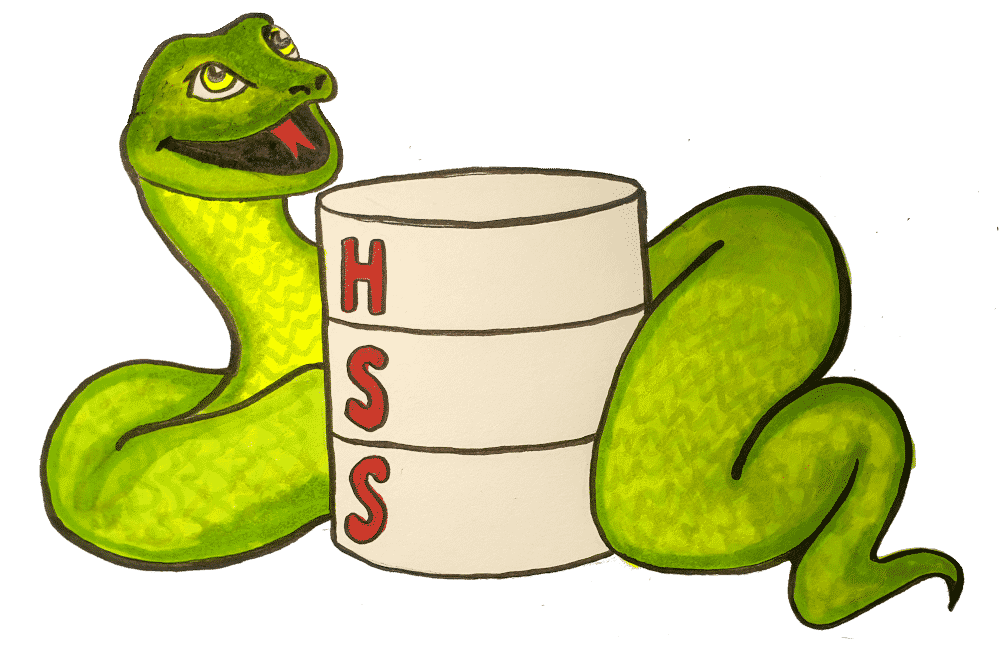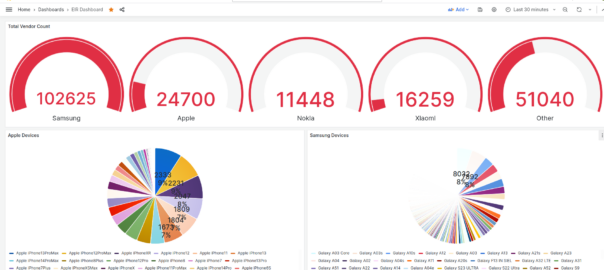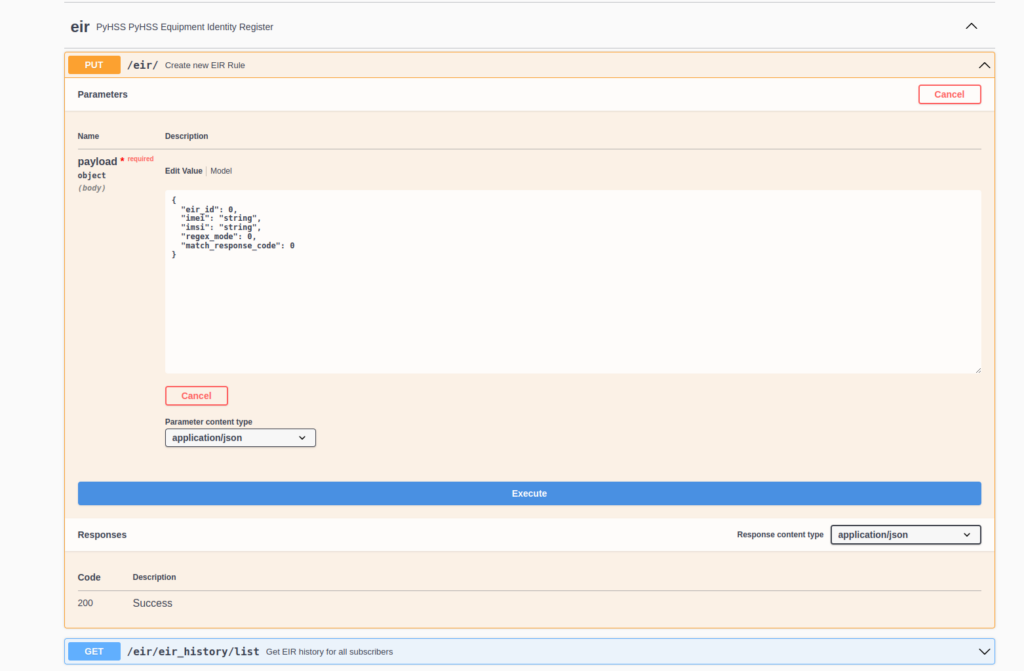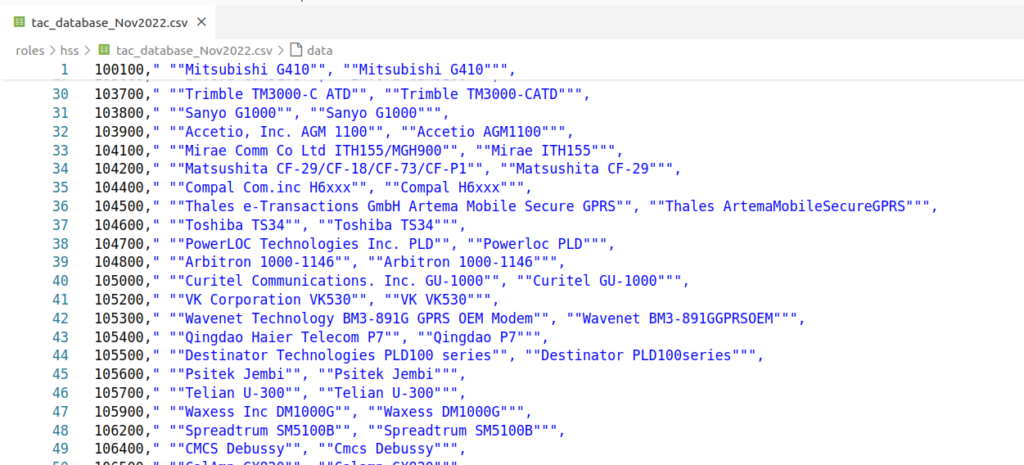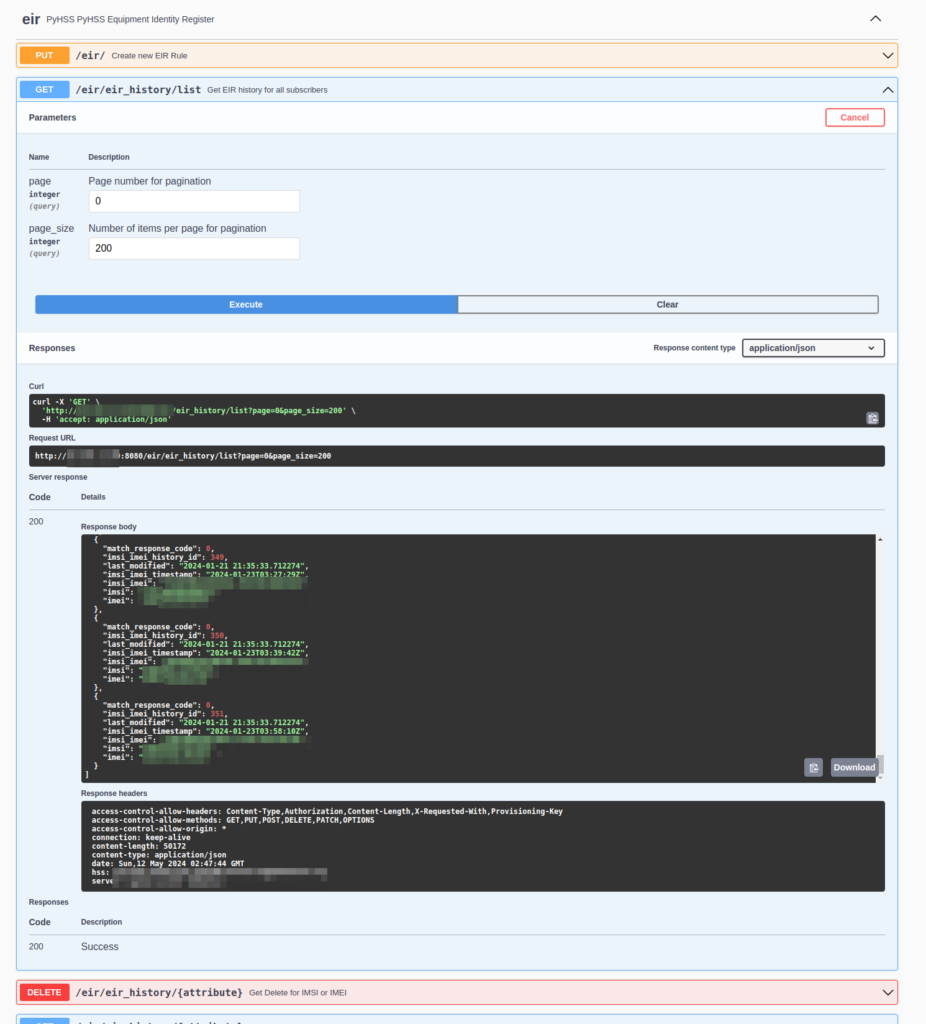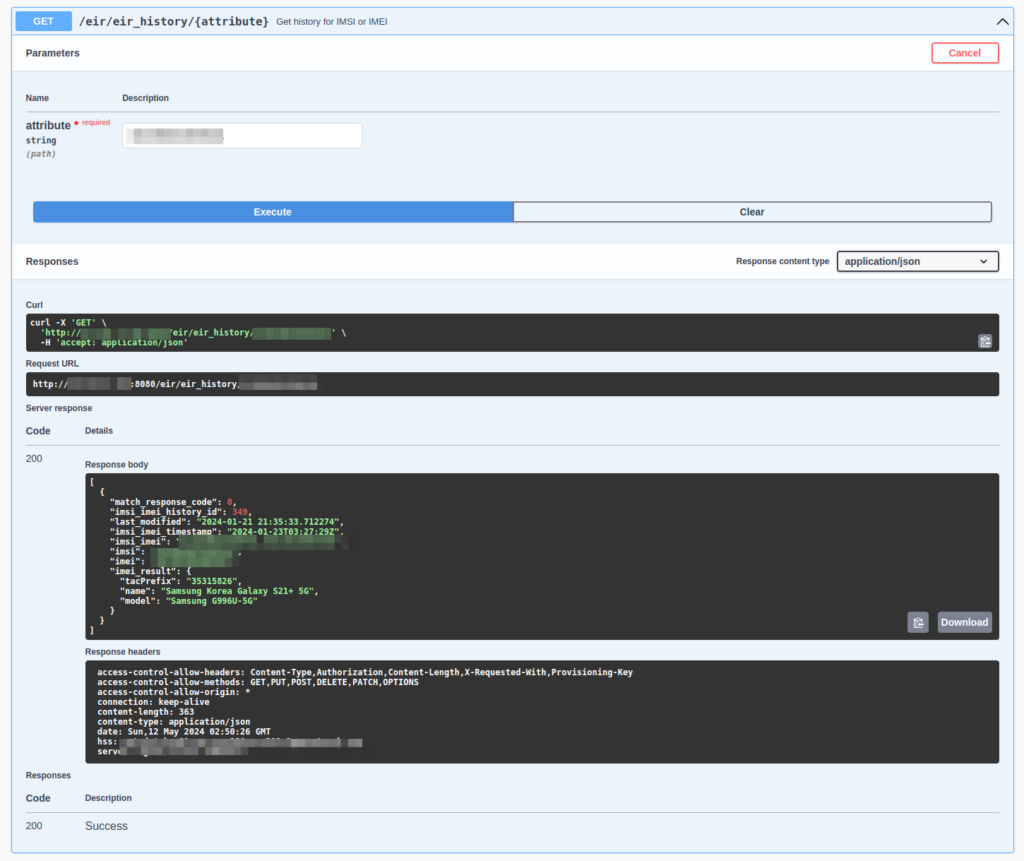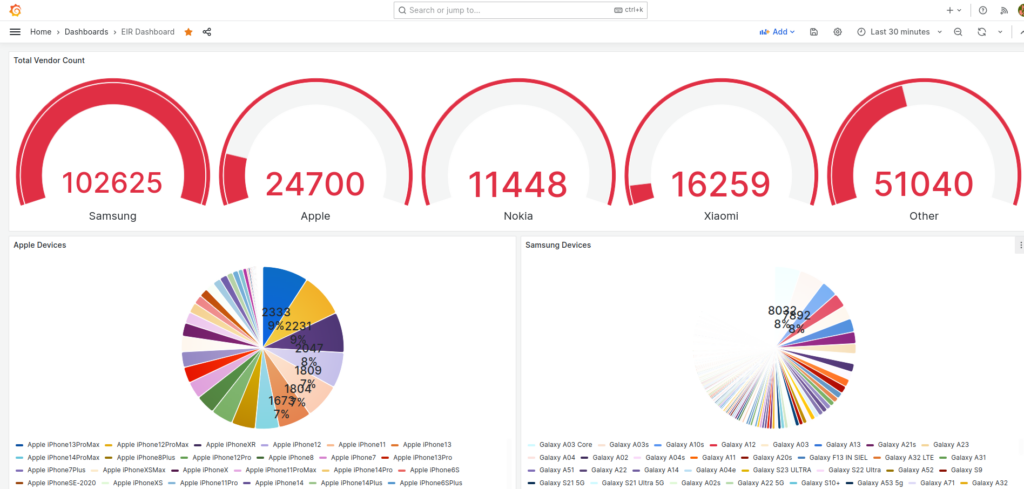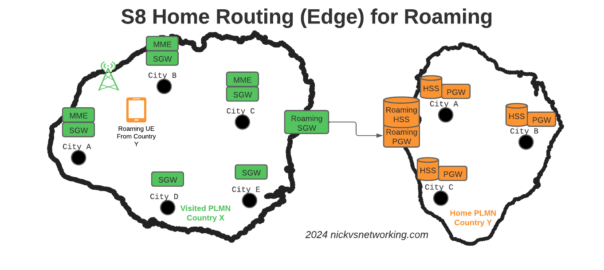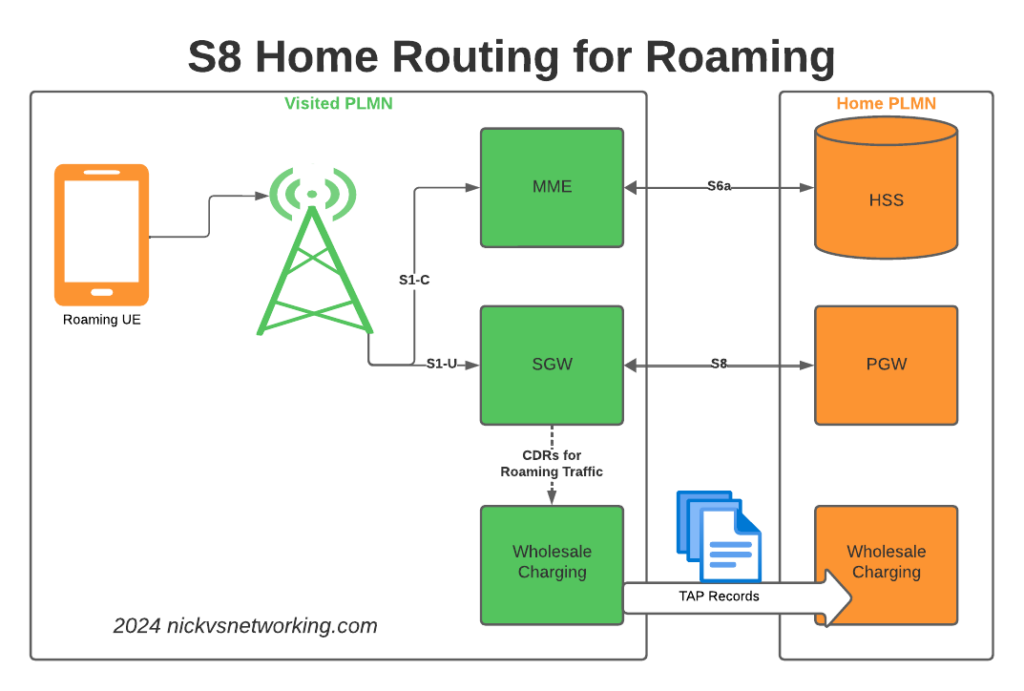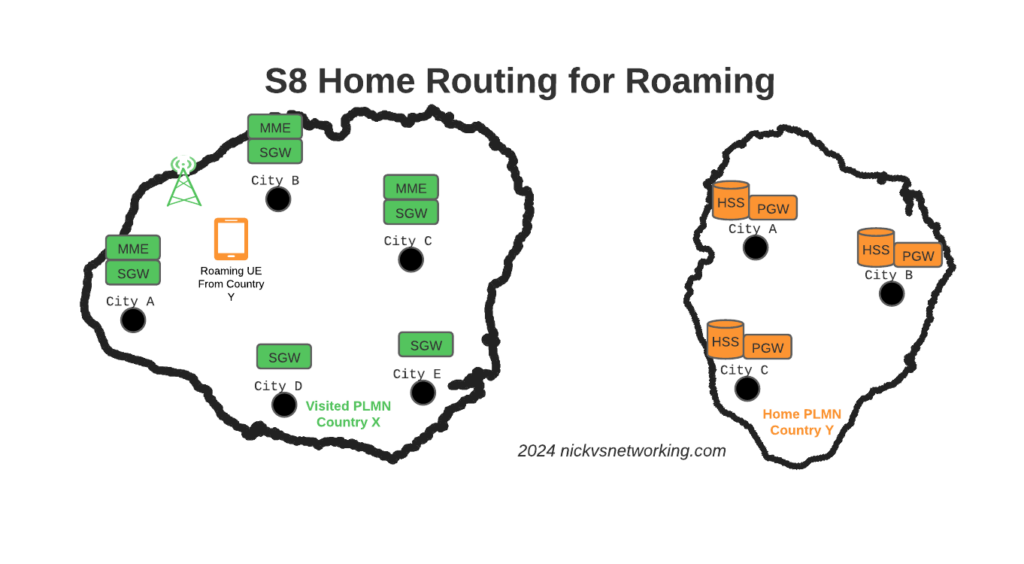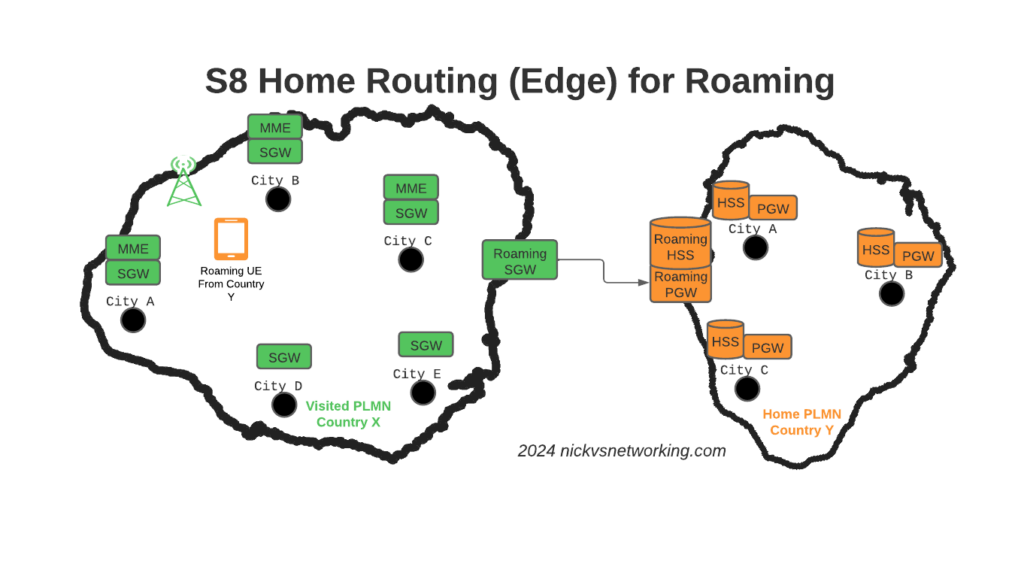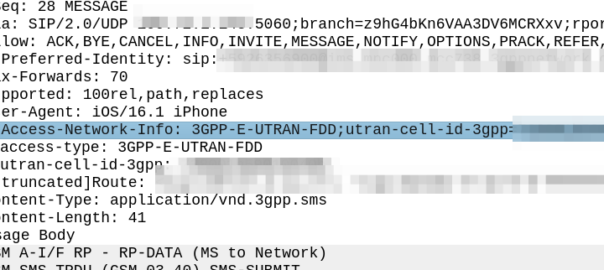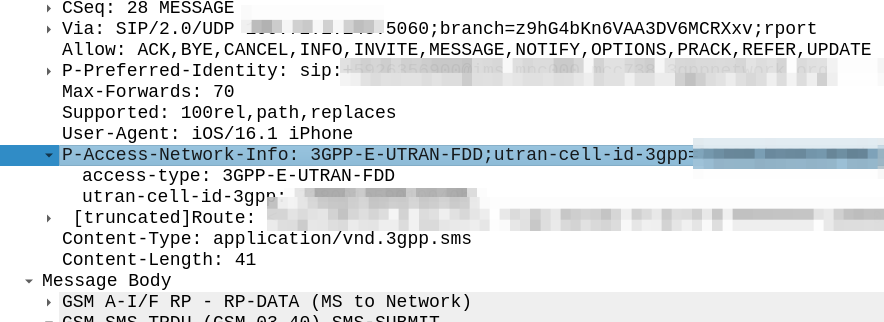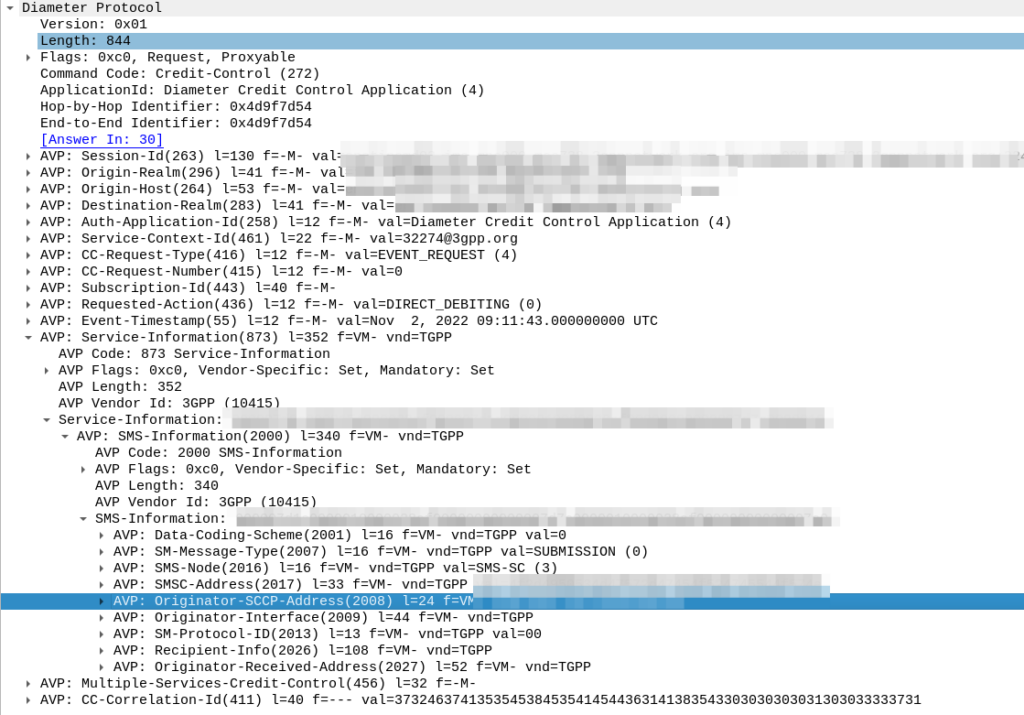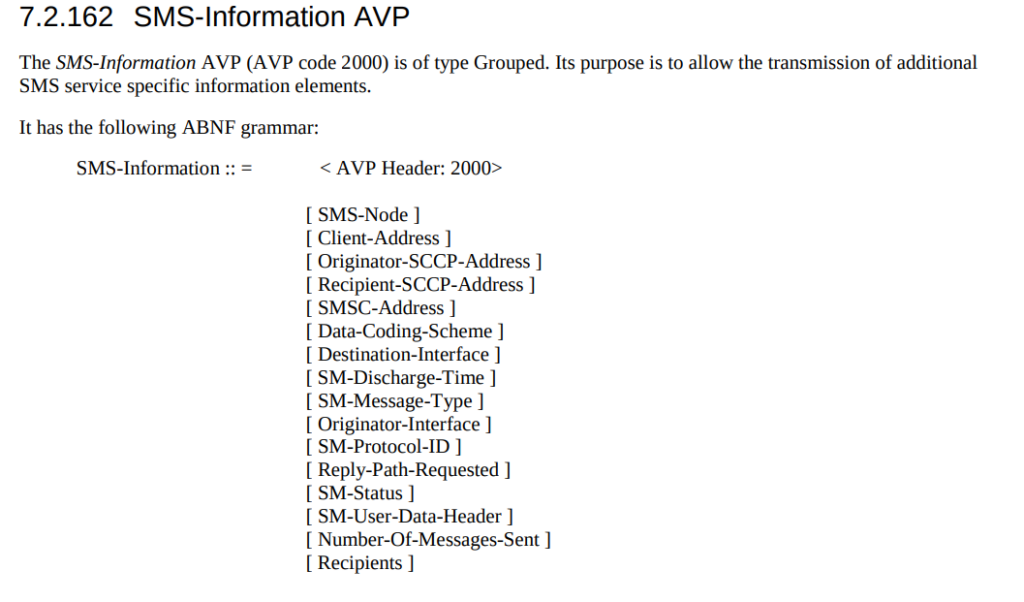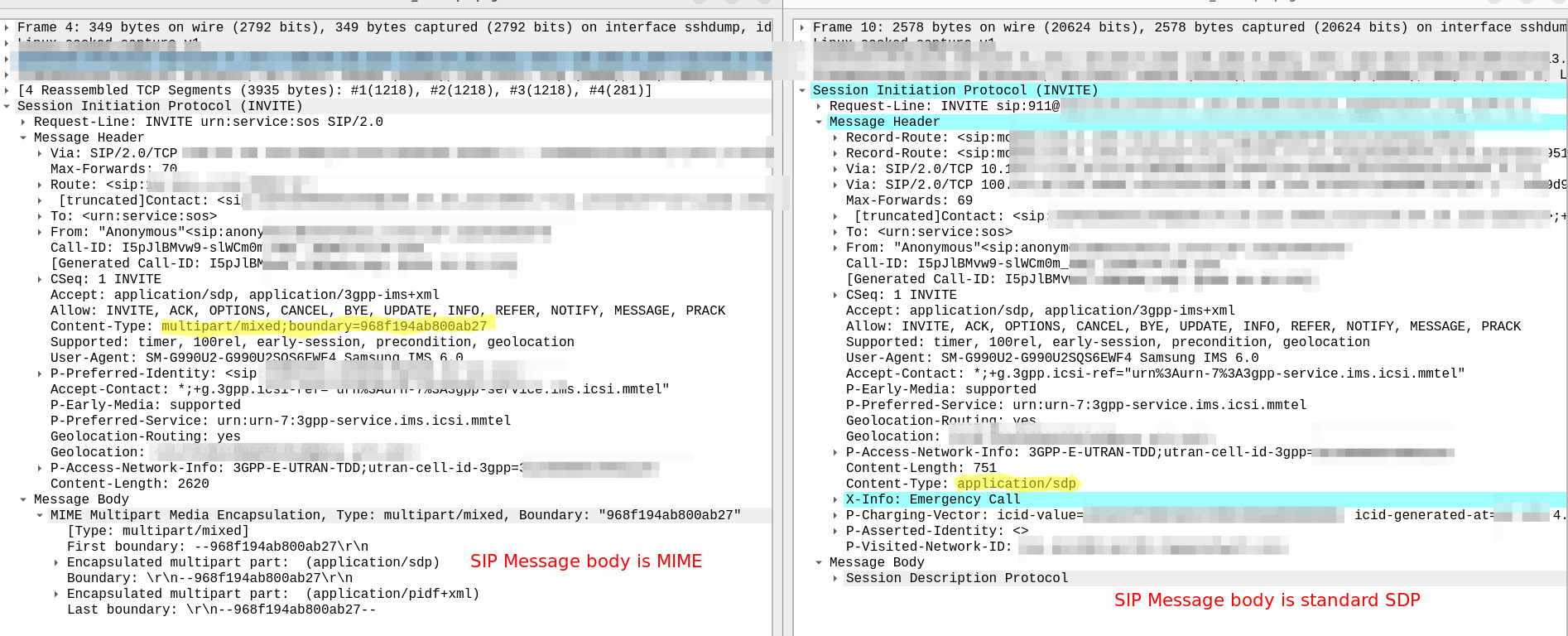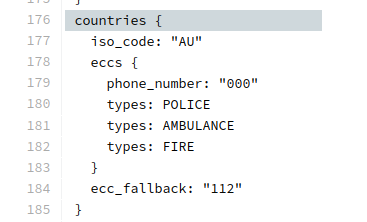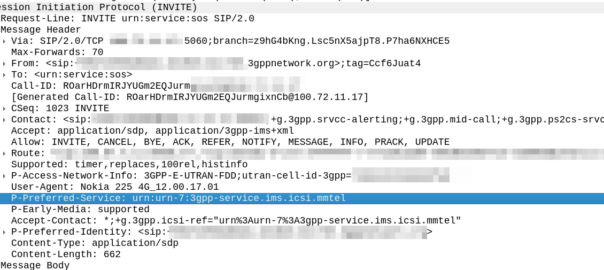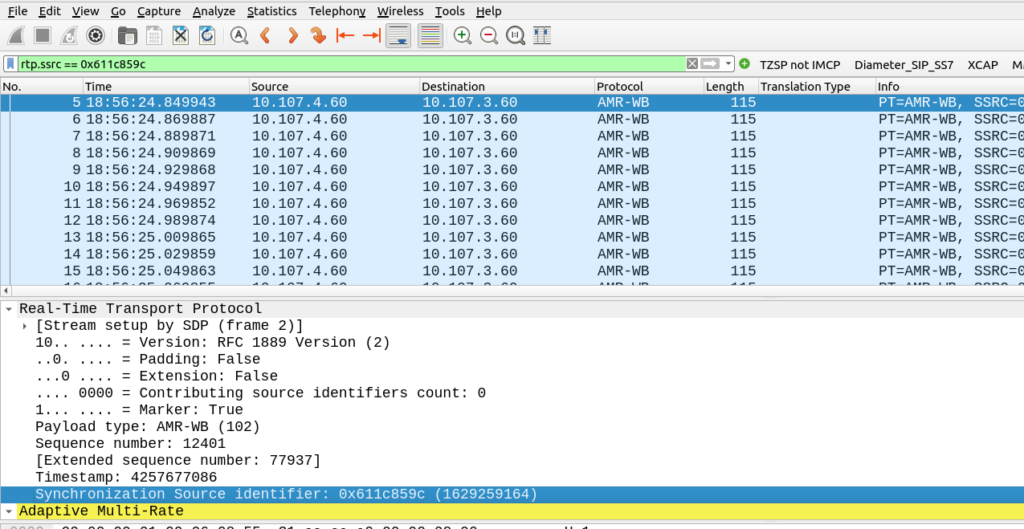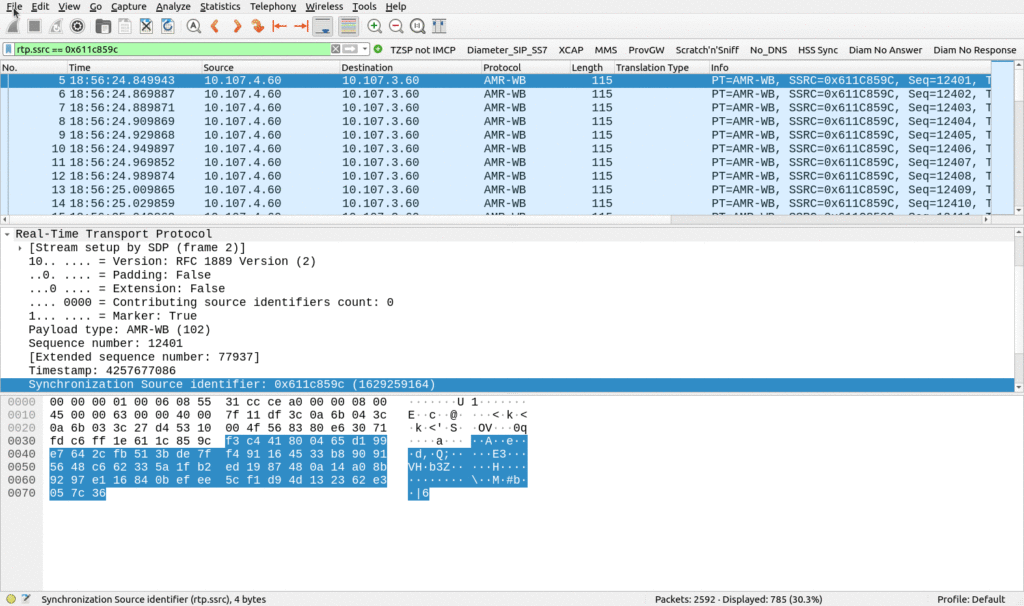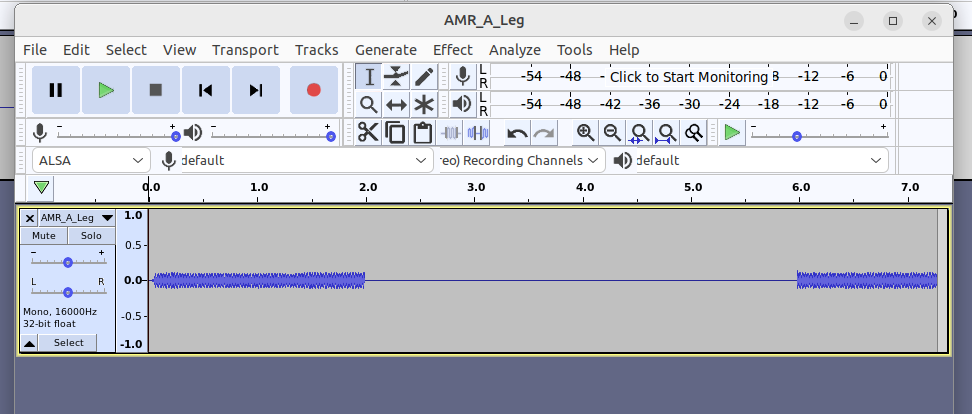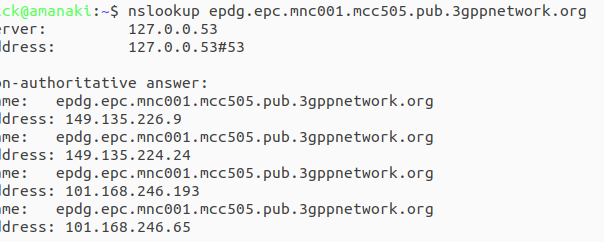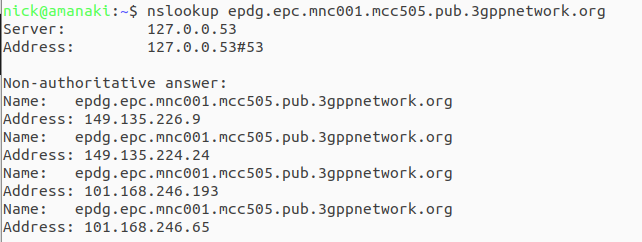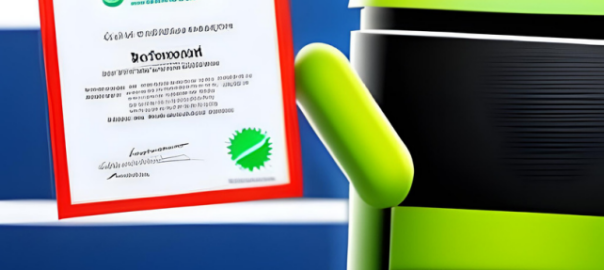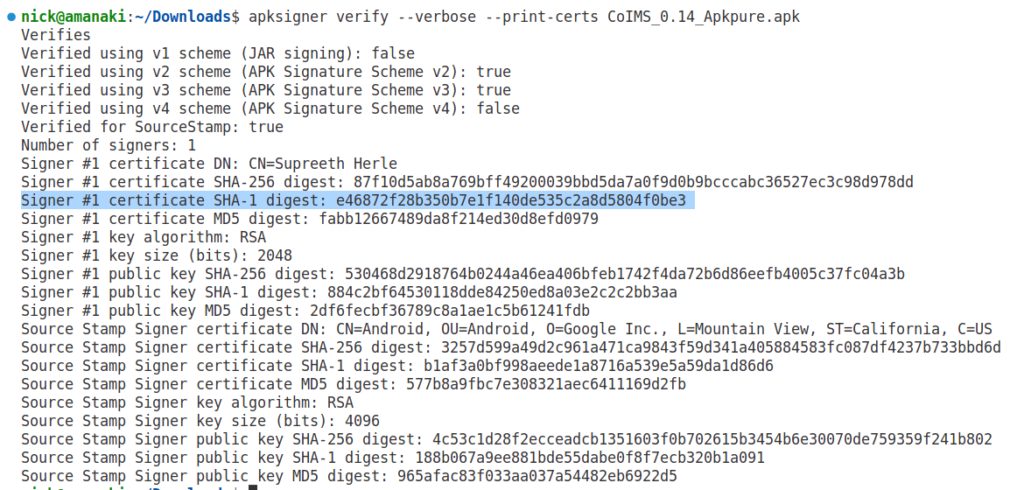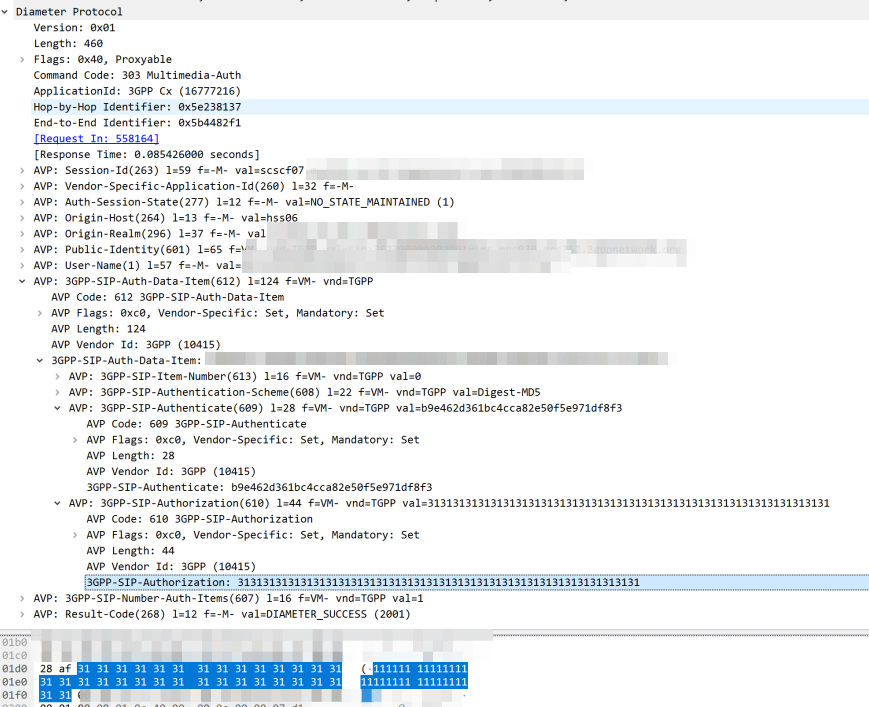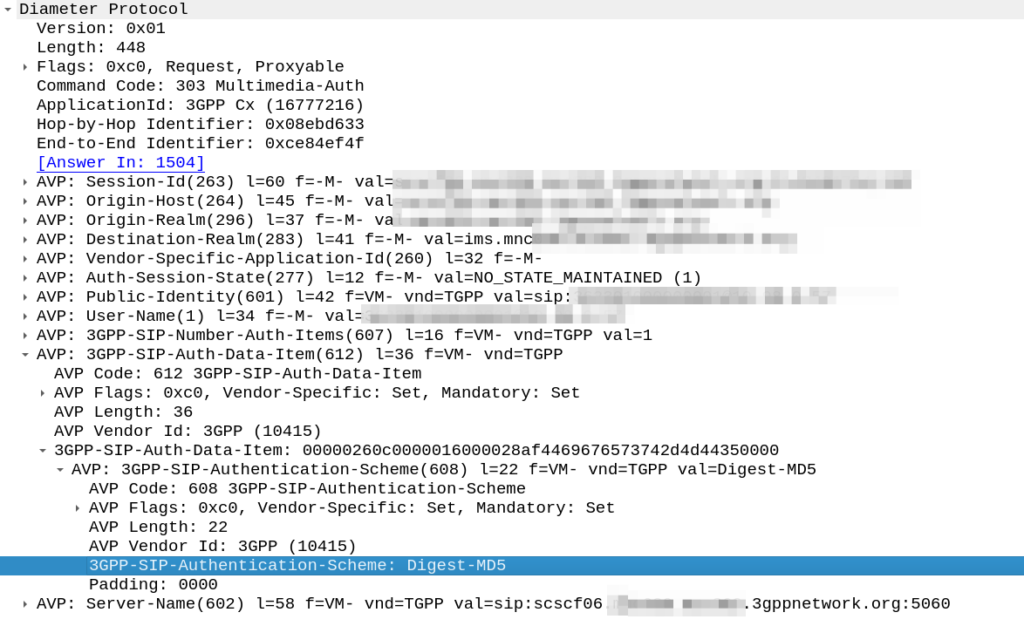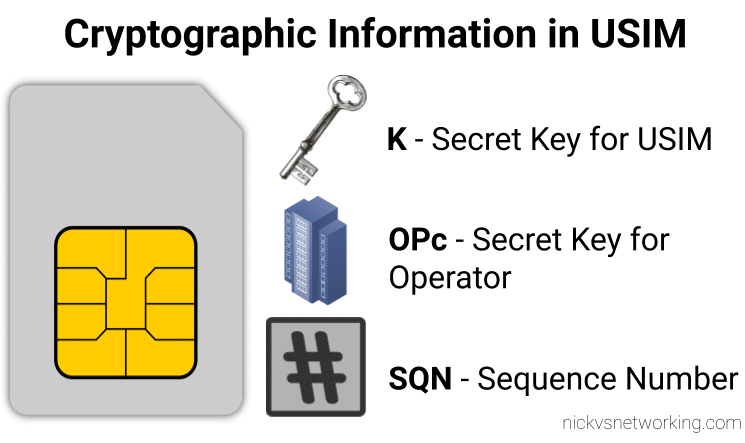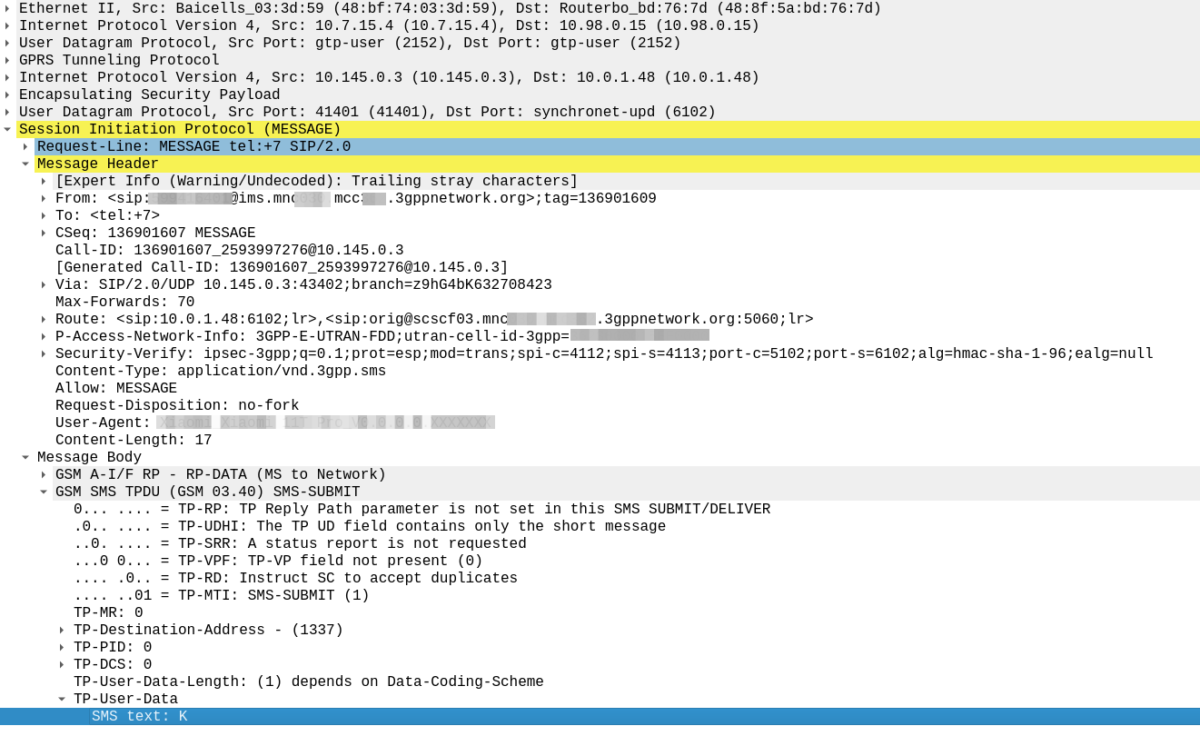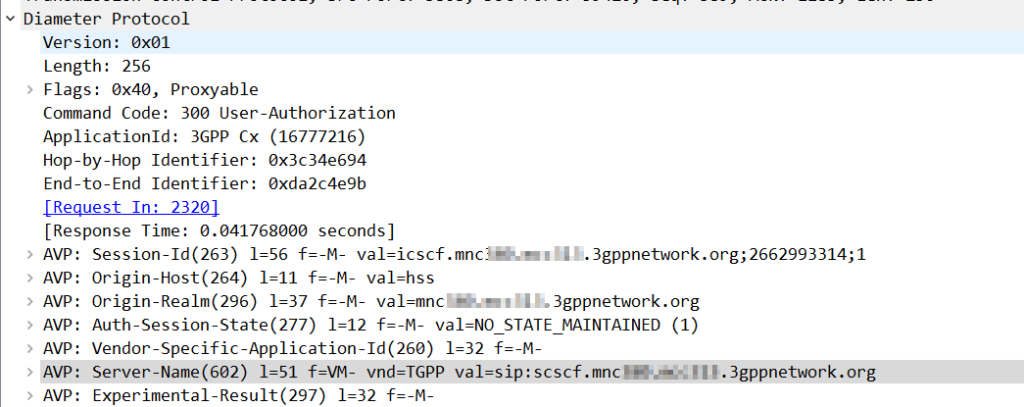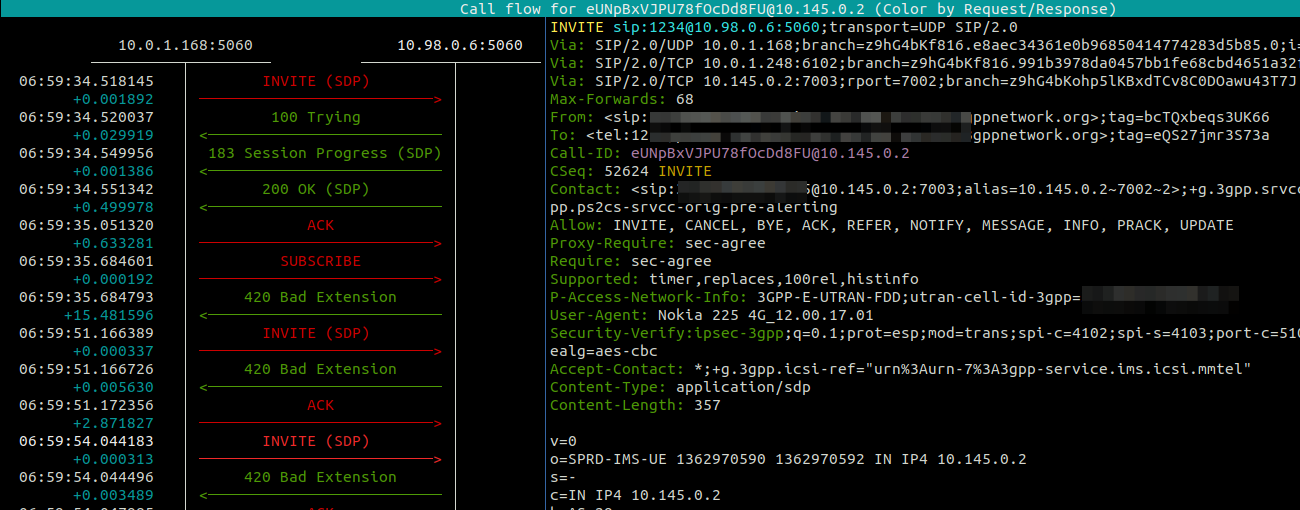I generally do this with Python or via the Swagger UI for the Web UI, but here’s how we can create a fixed-line IMS subscriber in PyHSS, so we can register it with a softphone, without using EAP-AKA.
Firstly we create the AuC object for this password combo.
curl -X 'PUT' \
'http://10.97.0.36:8080/auc/' \
-H 'accept: application/json' \
-H 'Content-Type: application/json' \
-d '{
"ki": "yoursippassword123",
"opc": "",
"amf": "8000",
"sqn": "1"
}'
Get back the AuC ID from the JSON body, we’ll use this to provision the Sub:
"auc_id": 110,Next we create the subscriber, the speeds will be 0 as there is no data on the service, but we will add an default APN so the validation passes:
curl -X 'PUT' \
'http://10.97.0.36:8080/subscriber/' \
-H 'accept: application/json' \
-H 'Content-Type: application/json' \
-d '{
"default_apn": 1,
"roaming_rule_list": null,
"apn_list": "0",
"subscribed_rau_tau_timer": 600,
"msisdn": "123451000001",
"ue_ambr_dl": 0,
"ue_ambr_ul": 0,
"imsi": "001001000090001",
"nam": 2,
"enabled": true,
"roaming_enabled": null,
"auc_id": 110
}'
Alright, that’s the basics done, now we’ll create the IMS subscriber.
Provision it:
curl -X 'PUT' \
'http://10.97.0.36:8080/ims_subscriber/' \
-H 'accept: application/json' \
-H 'Content-Type: application/json' \
-d '{
"pcscf_realm": null,
"scscf_realm": null,
"pcscf_active_session": null,
"scscf_peer": null,
"msisdn": "123451000001",
"pcscf_timestamp": null,
"sh_template_path": "default_sh_user_data.xml",
"msisdn_list": "123451000001",
"pcscf_peer": null,
"last_modified": "2024-04-25T00:33:37Z",
"imsi": "001001000090001",
"xcap_profile": null,
"ifc_path": "default_ifc.xml",
"sh_profile": "\n<!-- This container for the XCAP Data for the Subscriber -->\n<RepositoryData>\n <ServiceIndication>ApplicationServer</ServiceIndication>\n <SequenceNumber>0</SequenceNumber>\n <ServiceData>\n <!-- This is the actual XCAP Data for the Subscriber -->\n \n <!-- XCAP Default Template (no XCAP Data stored in Database) -->\n <simservs xmlns=\"http://uri.etsi.org/ngn/params/xml/simservs/xcap\" xmlns:cp=\"urn:ietf:params:xml:ns:common-policy\">\n <originating-identity-presentation active=\"true\" />\n <originating-identity-presentation-restriction active=\"true\">\n <default-behaviour>presentation-not-restricted</default-behaviour>\n </originating-identity-presentation-restriction>\n <communication-diversion active=\"true\">\n <!-- No Answer Time -->\n <NoReplyTimer>20</NoReplyTimer>\n <cp:ruleset>\n <!-- Call Forward All Rule -->\n <cp:rule id=\"rule0\">\n <cp:conditions>\n <communication-diverted />\n </cp:conditions>\n <cp:actions>\n <forward-to>\n <target>sip:[email protected]</target>\n </forward-to>\n </cp:actions>\n </cp:rule>\n <!-- Call Forward Not Registered Rule -->\n <cp:rule id=\"rule1\">\n <cp:conditions>\n <not-registered />\n </cp:conditions>\n <cp:actions>\n <forward-to>\n <target>sip:[email protected]</target>\n </forward-to>\n </cp:actions>\n </cp:rule>\n <!-- Call Forward No Answer Rule -->\n <cp:rule id=\"rule2\">\n <cp:conditions>\n <no-answer />\n </cp:conditions>\n <cp:actions>\n <forward-to>\n <target>sip:[email protected]</target>\n </forward-to>\n </cp:actions>\n </cp:rule>\n <!-- Call Forward Busy Rule -->\n <cp:rule id=\"rule3\">\n <cp:conditions>\n <busy />\n </cp:conditions>\n <cp:actions>\n <forward-to>\n <target>sip:[email protected]</target>\n </forward-to>\n </cp:actions>\n </cp:rule>\n <!-- Call Forward Unreachable Rule -->\n <cp:rule id=\"rule4\">\n <cp:conditions>\n <not-reachable />\n </cp:conditions>\n <cp:actions>\n <forward-to>\n <target>sip:[email protected]</target>\n </forward-to>\n </cp:actions>\n </cp:rule>\n </cp:ruleset>\n </communication-diversion>\n \n <incoming-communication-barring active=\"true\">\n <cp:ruleset>\n <cp:rule id=\"rule0\">\n <cp:conditions />\n <cp:actions>\n <allow>true</allow>\n </cp:actions>\n </cp:rule>\n </cp:ruleset>\n </incoming-communication-barring>\n\n <outgoing-communication-barring active=\"false\">\n </outgoing-communication-barring>\n </simservs>\n\n </ServiceData>\n \n</RepositoryData>\n",
"pcscf": null,
"scscf": null,
"scscf_timestamp": null
}'
And with that we’re done,
We can now register 001001000090001 at our IMS, with password yoursippassword123 which has the MSISDN / phone number 123451000001.
Easy!
